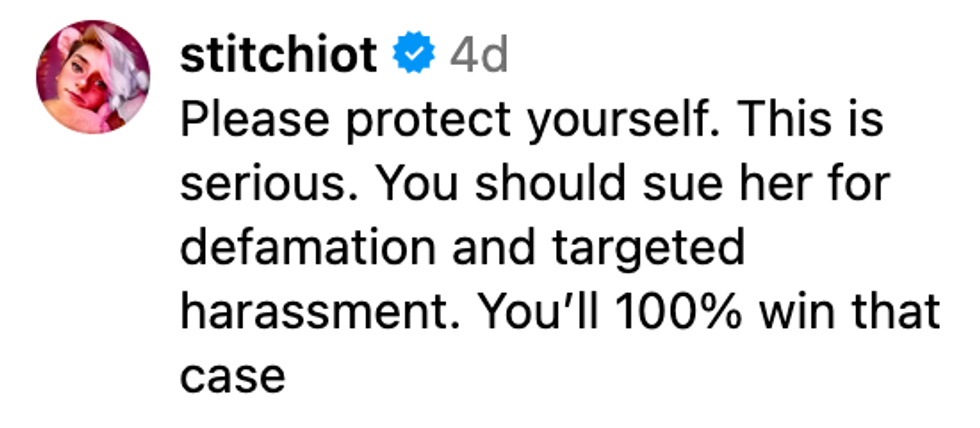With the current global pandemic, states and municipalities are looking for ways to accommodate voting for all citizens in November without endangering anyone's life. While some suggest high risk individuals can just stay home, this ignores the risks to poll workers.
It also ignores the fact everyone is at risk from the viral pathogen that has killed at least 106,000 people including people who were not "high risk." So many states are exploring expanding their vote by mail program.
Five states already conduct all elections by mail: Colorado, Hawaii, Oregon, Washington and Utah.
But the administration of President Donald Trump has campaigned hard against expanded voting by mail in so-called blue states while remaining mum over the same initiatives in red states like Georgia and Florida.
In a New York Times interview published Monday, Trump's Attorney General Bill Barr tried to back up his boss' false claims about mail in ballots.
Barr said:
"We've been talking about how, in terms of foreign influence, there are a number of foreign countries that could easily make counterfeit ballots, put names on them, send them in. And it'd be very hard to sort out what's happening."
But Barr had admitted prior to making the unfounded claims that he never looked into the feasibility of the risk he said was a reason to not use vote by mail.
In addition to the five states that do all mail voting, 21 more states conduct at least some portion of their voting by mail. And the military has voted by mail since the Civil War according to a report by Military Times.
Military Timeswrote:
"Not surprisingly President Trump has opposed allowing states to give every American the option to vote by mail. While he claims that voting by mail has a tremendous potential for fraud, he has publicly admitted that the real reason is that he fears a large turnout favors Democrats."
"But if Trump had not avoided military service in Vietnam in 1968, by having a doctor make a dubious claim that he had bone spurs, he would have known that the U.S. military and their families have been voting by mail in large numbers since the Civil War, that Congress has been supporting it these past 150 years, and that there have been almost no instances of fraud."
Many of these military ballots are coming from overseas deployed personnel and military personnel and families stationed overseas. Yet foreign powers have never attempted the scheme Barr claimed was a legitimate risk.
The five states that do all mail voting have also not seen a foreign power infiltrate their voting process. The reason involves the complexity of ballots and envelopes used to mail ballots.
According to a Talking Points Memo report on Barr's claim:
"The theory ignores the numerous safeguards election officials have put in place to secure the integrity of ballots submitted absentee. Among them are the bar codes many states put on absentee ballots that allow voters to track the progress of their individual ballot through the mail system."
"Additionally, a hypothetical foreign government would have to counterfeit not just the ballot itself—which reflects the specific precinct to which a voter belongs and the specific contests in which [they are] eligible to participate—but the sophisticated envelope the voter uses to send [their] ballot back, as well as the envelope that keeps [their] completed ballot secret."
"Once the ballot is received by elections officials, they also compare the signature on file for a voter to the one [they] signed on [their] ballot, providing another layer of security."
People on social media also called out the Trump administration's latest attempt to discredit vote by mail in an attempt to limit the number of citizens allowed to vote in November.
Several experts weighed in.
Let's start with the ballot. You can't just print out a single ballot for the entire U.S. No two localities have the same ballot because local offices appearing on it are different
— Michael McDonald (@ElectProject) June 1, 2020
Okay. What if you want to target a single precinct since district lines cut cities and counties? You'd need to hijack a ballot and be able to mass print the ballot and two return envelopes (the return envelope and the inner privacy envelope)
— Michael McDonald (@ElectProject) June 1, 2020
Suppose that you perfectly recreate the 3 pieces of paper, including barcoding on the exterior unique to each voter? Next, you have to know who hasn't requested and returned a ballot yet. It is going to be strange when two ballots from the same person show up at election offices
— Michael McDonald (@ElectProject) June 1, 2020
Which ballot is the real ballot? There is a signature on the outside return envelope to compare against. Election officials will figure out something is afoot pretty quickly. This is why it is easy for election officials to detect ham-handed attempts like making ballot copies
— Michael McDonald (@ElectProject) June 1, 2020
All the while, the post office, which works with election officials to process ballots, will have to be oblivious to fake ballots moving through their system. If someone dumps a bunch at a single location, that will be suspicious. Certainly if they are overseas addresses
— Michael McDonald (@ElectProject) June 1, 2020
An example of the bar codes on mail ballots envelopes here 👇 2/ pic.twitter.com/rZMncfzjnJ
— Michael Li 李之樸 (@mcpli) June 1, 2020
Also, in most states, your signature on the mail-ballot envelope is compared to the signature on file before a ballot is counted. Here's 👇how it works in Arizona. 3/ pic.twitter.com/jx6lQsW9fC
— Michael Li 李之樸 (@mcpli) June 1, 2020
And lest you wonder whether that actually works, Texas Lt. Gov. Dan Patrick had a mail ballot rejected because of a signature verification issue. 4/ https://t.co/C7J1cn8Eat pic.twitter.com/qQdusda5Ty
— Michael Li 李之樸 (@mcpli) June 1, 2020
As did First Lady Melania Trump, whose mail ballot in the 2017 NYC mayoral election was rejected because she didn't sign the envelope. 5/ https://t.co/ulfTm965Ik pic.twitter.com/IX8a1tqjRL
— Michael Li 李之樸 (@mcpli) June 1, 2020
Michael Li pointed out states reject valid ballots due to signature changes over time.
In fact, as I've written before, a bigger problem is that not all states give you a chance to remedy a potential signature mismatch - and they reality is that some people's signatures change over time, especially as they get older. 6/ https://t.co/cSVYSOiPNF https://t.co/UJ0PSWesEO
— Michael Li 李之樸 (@mcpli) June 1, 2020
Per Li, the legitimate issue is good ballots not being counted and voters lacking recourse, not counterfeit ballots.
Also in question is how are foreign governments going to afford to counterfeit all of the individual ballots one voter receives as well as any bar codes and also hire forgers to copy sample signatures on file with municipalities—signatures they have no access to. Those complexities make Barr's assertion extremely improbable to the point of near impossibility.
The President's attempts to stop registered voters from voting is also a misdirected waste of time and resources according to his critics.
And the reality is that the states that will be potentially decisive in 2020 all already allow no-excuse vote by mail (the swing-y state that's doesn't is Texas). 7/ pic.twitter.com/N52Ibo61op
— Michael Li 李之樸 (@mcpli) June 1, 2020
Michael Li added why it is important that voters push back against any false claims and outright lies about vote by mail.
So it's hard to see Barr's comments as something other than the laying of the ground work for casting doubt about the election after November That's why it's important that we all push back. 8/
— Michael Li 李之樸 (@mcpli) June 1, 2020
As of Monday, June 1, the 2020 election is 154 days away.
Are you registered to vote?
Have you requested an absentee ballot?








 @bottleneckloser/Instagram
@bottleneckloser/Instagram @bottleneckloser/Instagram
@bottleneckloser/Instagram @bottleneckloser/Instagram
@bottleneckloser/Instagram @bottleneckloser/Instagram
@bottleneckloser/Instagram @bottleneckloser/Instagram
@bottleneckloser/Instagram @bottleneckloser/Instagram
@bottleneckloser/Instagram @bottleneckloser/Instagram
@bottleneckloser/Instagram @bottleneckloser/Instagram
@bottleneckloser/Instagram @bottleneckloser/Instagram
@bottleneckloser/Instagram @bottleneckloser/Instagram
@bottleneckloser/Instagram @bottleneckloser/Instagram
@bottleneckloser/Instagram





 @ElleGray/Mastodon
@ElleGray/Mastodon rEnoughMuskSpam/Reddit
rEnoughMuskSpam/Reddit rEnoughMuskSpam/Reddit
rEnoughMuskSpam/Reddit rEnoughMuskSpam/Reddit
rEnoughMuskSpam/Reddit rEnoughMuskSpam/Reddit
rEnoughMuskSpam/Reddit rEnoughMuskSpam/Reddit
rEnoughMuskSpam/Reddit @Angelica_Reed1/X
@Angelica_Reed1/X
 @fred_guttenberg/X
@fred_guttenberg/X @MAGALieDetector/X
@MAGALieDetector/X

 @realDonaldTrump/Truth Social
@realDonaldTrump/Truth Social